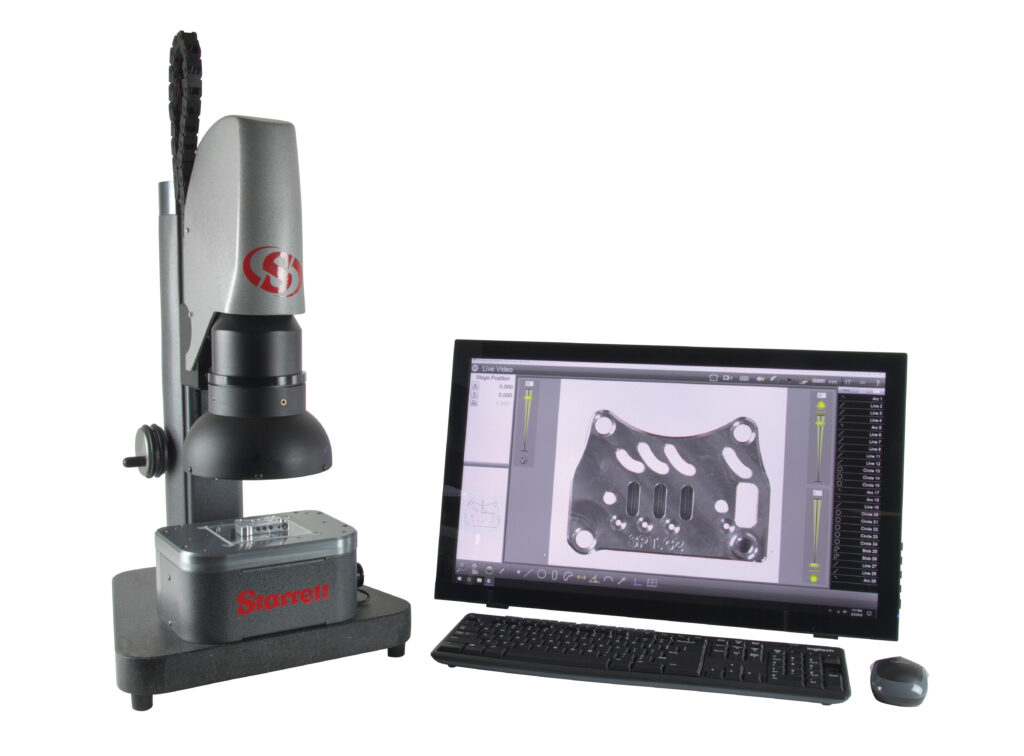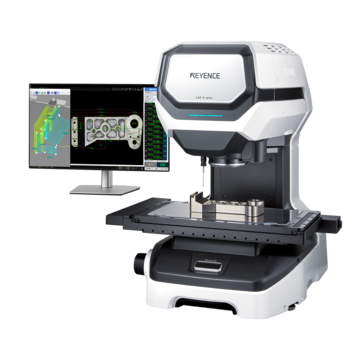How to prepare your team to use optical measurement systems with confidence
Understanding Exactly How Optical Dimension Systems Enhance High Quality Control Processes
When you're looking to improve high quality control procedures, understanding optical dimension systems is necessary. Let's discover the essential elements that make optical dimension a game-changer in top quality monitoring.

The Basics of Optical Dimension Equipments
Optical measurement systems play a vital role in assuring product top quality across different markets. These systems utilize light-based innovations to gather specific information about physical attributes, such as dimensions, surface finish, and color. By utilizing lasers, sensing units, and electronic cameras, you can accomplish non-contact measurements that decrease the threat of harmful fragile items.
Comprehending the basics of these systems is essential for efficient quality assurance. They operate on principles like diffraction, refraction, and reflection, permitting you to examine numerous products and shapes. The precision and rate of optical dimensions make it possible for real-time tracking, which helps you determine flaws early in the manufacturing process.
Furthermore, these systems can be integrated with software program for enhanced data analysis, developing a comprehensive top quality administration approach. By leveraging optical measurement systems, you not only enhance efficiency yet additionally ensure your items meet strict quality criteria, inevitably boosting consumer complete satisfaction.
Kinds Of Optical Dimension Technologies
Various types of optical measurement modern technologies are readily available, each created to meet specific demands in top quality control. You might experience laser triangulation, which gauges range by examining the angle of a reflected laser light beam. This technology is perfect for capturing specific measurements in 3D room.
One more option is structured light, where you forecast a collection of light patterns onto a surface to produce a detailed 3D model. This approach functions well for complex geometries.
After that there's interferometry, which can find minute changes in surface area profiles by examining the interference patterns of light waves. This is specifically valuable for applications calling for nanometer accuracy.
You may also take into consideration optical coherence tomography, which offers high-resolution images of interior features without harming the item. Each modern technology serves different needs, so selecting the ideal one is essential for achieving highest quality control results.
Key Advantages of Optical Dimension in Quality Control
When it involves quality assurance, leveraging optical dimension technologies can considerably improve accuracy and effectiveness. These systems enable you to capture in-depth dimensions rapidly, minimizing the moment required for examinations. You'll notice that optical measurements can determine even the tiniest problems that might go undetected with traditional approaches, making sure product consistency.
Furthermore, making use of optical dimension systems frequently brings about minimized waste and rework, as you capture problems early in the production process. You'll also value the non-contact nature of lots of optical approaches, which lessens damages to fragile components throughout analysis. This adaptability enables a wider variety of applications throughout various materials.
With real-time information collection, you can make enlightened decisions swiftly, simplifying your quality control procedures (optical measurement system). Inevitably, incorporating optical dimension right into your top quality control approach not just boosts efficiency but likewise enhances customer satisfaction by supplying higher-quality products consistently
Just How Optical Measurement Solution Improve Precision and Precision
Optical dimension systems enhance accuracy and accuracy by boosting measurement resolution, enabling you to find even the tiniest variants. With real-time information evaluation, you can make instant changes and decisions, guaranteeing your processes remain on track. This mix not only enhances product high quality however also enhances your quality assurance efforts.
Boosted Dimension Resolution
By leveraging advanced modern technologies, optical dimension systems greatly boost dimension resolution, leading to improved accuracy and accuracy in high quality control. These systems make use of high-resolution cams and advanced formulas to catch minute information that standard techniques often miss. You'll notice a significant difference in the quality of dimensions, allowing you to determine even the smallest inconsistencies from requirements. This enhanced resolution aids remove uncertainty, giving you with data that's both actionable and dependable. Therefore, hop over to these guys you can make even more educated decisions and preserve tighter tolerances in your procedures. Eventually, boosted measurement resolution not only improves item top quality yet additionally enhances source usage, ensuring click here for info that you meet client assumptions consistently.
Real-Time Data Analysis
Although conventional measurement systems typically depend on delayed information processing, real-time information evaluation in optical measurement systems changes the method you monitor top quality. You'll experience improved precision because you can instantly contrast dimensions against predefined criteria. Additionally, real-time information aids you build up beneficial insights over time, tweak your top quality control processes.
Integrating Optical Dimension Into Existing Quality Assurance Processes
Integrating optical dimension into your existing quality assurance procedures can considerably improve precision and efficiency. By integrating optical dimension systems, you can simplify data collection, decreasing human mistake while raising the speed of evaluations. Beginning by determining bottom lines in your manufacturing line where optical dimensions will certainly offer one of the most worth.
Next, educate your group on the brand-new innovation, ensuring they recognize just how to make use of the systems successfully. This training will help them interpret outcomes quickly and precisely.
You ought to additionally establish a method for integrating optical information right into your existing high quality management software. This assimilation enables real-time analytics and reporting, enhancing decision-making.
Frequently review the data and comments from your group to recognize any type of locations for renovation. With these steps, you'll not just improve your high quality control processes but additionally promote a culture of constant improvement within your company.
Case Researches: Successful Execution of Optical Dimension Solutions
In this section, you'll discover just how optical measurement systems have transformed top quality control in markets such as aerospace and automobile production - optical measurement system. You'll see real-world examples of how these innovations boosted click site accuracy and efficiency. These study highlight the concrete advantages of integrating optical systems right into manufacturing processes
Aerospace Sector Applications
As the aerospace market faces boosting demands for accuracy and efficiency, firms are turning to optical measurement systems to boost their quality control procedures. A leading airplane producer integrated optical dimension modern technology to evaluate turbine blades, lowering examination time by 50% while improving accuracy.
Automotive Manufacturing Success
Optical dimension systems have actually additionally made substantial strides in the automotive manufacturing industry, where precision is essential to car performance and security. BMW integrated optical measurement for body assembly, ensuring components fit perfectly, which reduced rework and enhanced production efficiency. These case research studies demonstrate exactly how optical measurement systems empower you to achieve tighter resistances, lessen waste, and raise general product quality.
Future Trends in Optical Dimension and Quality Assurance
While innovations in technology proceed to reshape the production landscape, the future of optical measurement and quality assurance looks encouraging - optical measurement systems. You'll see a significant change towards automation and AI assimilation, making it possible for systems to examine information in real-time. This suggests quicker decision-making and reduced human mistake, inevitably enhancing item high quality
Moreover, as 3D imaging innovation enhances, you'll benefit from more precise dimensions of complex geometries, making it less complicated to maintain tight tolerances. The increase of cloud-based remedies will additionally enable you to accessibility information from another location, facilitating partnership and enhancing procedures.
Additionally, sustainability will play an important function in future advancements. Anticipate optical dimension systems to concentrate on power performance and waste decrease, straightening with international ecological objectives. By welcoming these fads, you can assure your top quality control procedures continue to be sophisticated, aiding your company prosper in a progressively open market.
Frequently Asked Questions
What Industries Benefit Most From Optical Dimension Systems?
You'll find sectors such as manufacturing, aerospace, and automotive advantage most from optical dimension systems. These markets depend on accurate measurements for quality control, guaranteeing products meet stringent criteria and enhancing general functional effectiveness.
How Do I Choose the Right Optical Dimension System?
To choose the right optical dimension system, evaluate your specific demands, think about the type of dimensions you need, assess the system's accuracy, and ensure it fits your budget and functional requirements.
What Are Usual Challenges in Applying Optical Measurement Equipments?
You'll deal with obstacles like combination with existing systems, ensuring precise calibration, educating personnel properly, and handling prices. Determining these difficulties early helps you establish strategies to conquer them and successfully carry out optical dimension systems.

Exist Training Resources Available for Optical Measurement Technologies?
Yes, there're various training resources offered for optical dimension modern technologies. You can locate on the internet programs, webinars, and workshops offered by sector specialists or companies. These resources can aid you properly carry out and utilize these innovative systems.
How Do Optical Dimension Solutions Compare to Typical Measurement Methods?
Optical dimension systems offer better precision and rate compared to typical techniques. They reduce human error, enable non-contact dimensions, and offer real-time information analysis, making them more effective for various applications in quality assurance.
Conclusion

Optical measurement systems improve precision and precision by boosting dimension resolution, allowing you to identify even the smallest variants.By leveraging innovative technologies, optical dimension systems substantially enhance dimension resolution, leading to improved accuracy and accuracy in high quality control.Although standard dimension systems typically rely on delayed information processing, real-time information evaluation in optical dimension systems revolutionizes the method you check quality.As the aerospace industry faces enhancing demands for precision and effectiveness, firms are transforming to optical dimension systems to boost their top quality control procedures. How Do Optical Measurement Systems Compare to Traditional Measurement Methods?